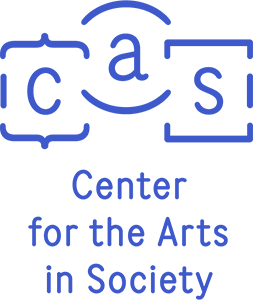Alexa Woloshyn Curator's Statement
Indigenous Futurisms, a term coined by Grace Dillon (Anishinaabe), explore alternative narratives of Indigenous self-determination and decolonization by conceiving of Indigenous-centered futurities. My CAS project examines decolonial visions and praxis in Indigenous Futurist creative work to challenge settler colonial narratives in Pittsburgh and beyond.
Two examples of Indigenous Futurisms came to mind when the COVID-19 pandemic shuttered the university, canceled my project’s spring programming, and isolated me in my house for a still-unspecified duration. The first was Anishinaabe author Waubgeshig Rice’s novel Moon of the Crusted Snow (2018). This piece of Indigenous Futurist speculative fiction immerses us in a small Anishinaabe community that must reckon with a sudden loss of power and communication. The novel is a gripping read that reveals Anishinaabe lifeways, critiques settler colonialism, and recalls long histories of resistance and resilience. One of the novel’s most potent themes is community and kinship (human and more-than-human) in Indigenous survivance (a concept from Anishinaabe scholar Gerald Vizenor).
The second was the track “Virus” from Indigenous DJ-Producer collective A Tribe Called Red, featuring rapper Saul Williams and drum group Chippewa Travellers. The title, of course, is almost too spot-on. But the “virus” of this Indigenous Futurist song and video is a metaphor for settler colonialism: in this case, the dominant settler culture is the Alie Nation; the nation of resistors—the Halluci Nation, consisting principally of Black, Brown, and Indigenous citizens—forms community and kinship, rejecting the narrative that they are “a conquered people.”
In both of these examples, kinship networks are foundational to Indigenous ways of being and knowing. Contact disrupted and devastated Indigenous kinships between humans and other-than-human relatives—trees, waterways, beavers, and bison, to name only a few. This is why—despite the commonly-expressed fear that we are nearing or in an apocalypse—Indigenous Futurist work reminds us that Indigenous peoples have been living in a post-apocalyptic world since Contact.
In this time of social isolation, our kin—our relationships—have come into sharper focus. Who are we isolated with? Isolated from? Who are we trying to care for—at a safe distance? How are we re-imagining safe and fulfilling kinship relations in times of grief or celebration? How can mutual aid expand our kinship networks? This newsletter presents two new works by Indigenous creators that consider these questions.
Morgan Overton is a Black Meherrin artist from Pittsburgh and a graduate student in social work (who completed her program this month!). These perspectives guide the vision behind her new painting, “Stay Safe.” This painting grounds us in the local Pittsburgh scene; we are prompted to think about connection and support, portrayed here between the Black grandmother and her grandchild. Overton asks us also to consider the larger societal context: here in Pittsburgh, where Black bodies are systemically oppressed and where Indigenous bodies are invisible, what can expansive kinship look like? How can mutual aid transform the existing inequities in the city?
Métis writer and educator Chelsea Vowel writes speculative fiction, which she calls Métis Futurisms. In “A Lodge Within Her Mind,” Vowel’s protagonist lives in our near future, “six months into her share of global isolation,” in Edmonton, Alberta, Canada. She struggles to define her time, her body, her thoughts against monotonously incessant anxiety, boredom, depression, and loneliness. Vowel explores the contrast of isolation and connection, longing for “an end to solitude.” Vowel’s story shows how hope can be rebuilt: “The possibility of turning in a different direction, a direction full of expansive kinship, of mutual aid.”
